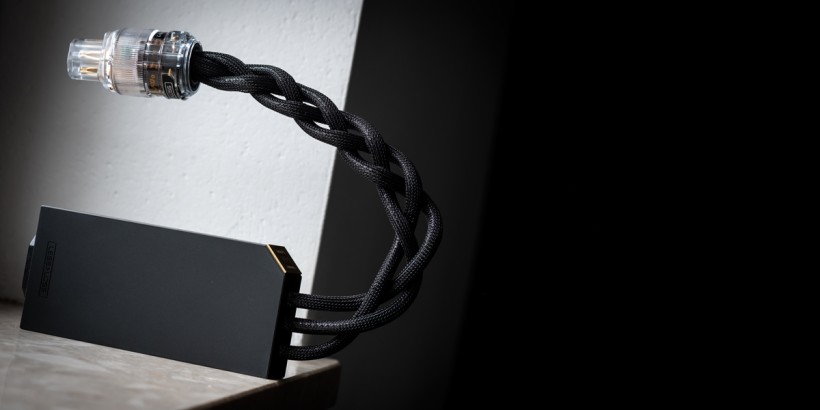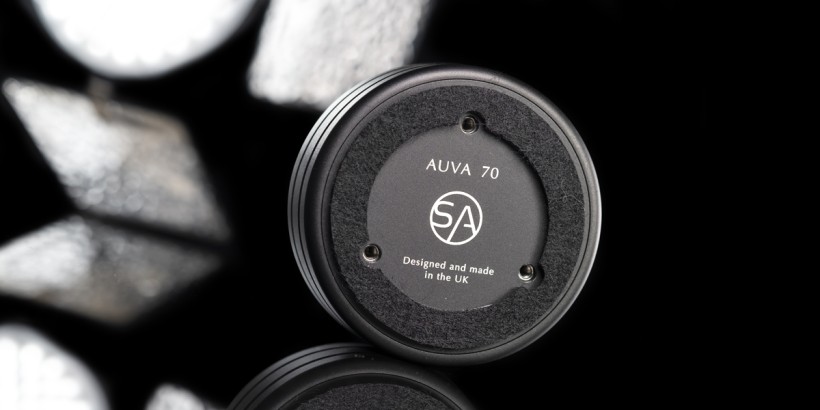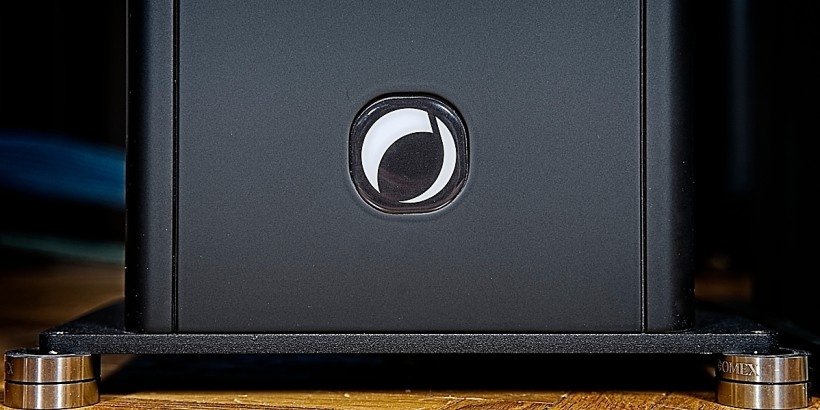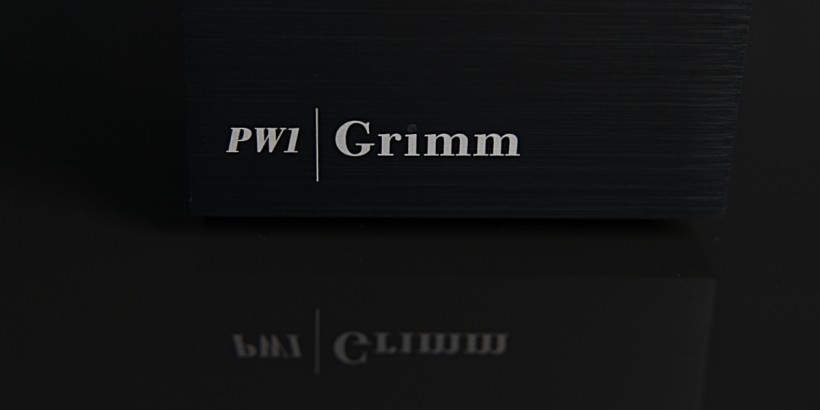English iFi Audio company has gained a lot of recognition over the past few years and rightfully so. Its small, silver, affordable and thoroughly enjoyable devices are the very reason. Although just several years old, this operation isn’t a newcomer. Its parent company – Abbingdon Music Research (aka AMR) – is known to deliver sophisticated equipment for the most demanding audiophile crowd. Once an opportunity struck to get familiar with its DP-777SE digital processor, this scribe jumped on-board in an instant. Enjoy!
Introduction
Still, iFi Audio is not a typical company, far from it in fact. Among regular products, be it headphone amplifiers or portable sources, in its offer there are some very unusual cases, i.e. iTube2. Who does valve buffers these days? Well, said operation does, it’s known to address fairly unknown audio related issues and target these via very specific products. People working for iFi/AMR have proper know-how to do so. One short glimpse at these operation’s activities on various audio related forums and everything becomes perfectly clear.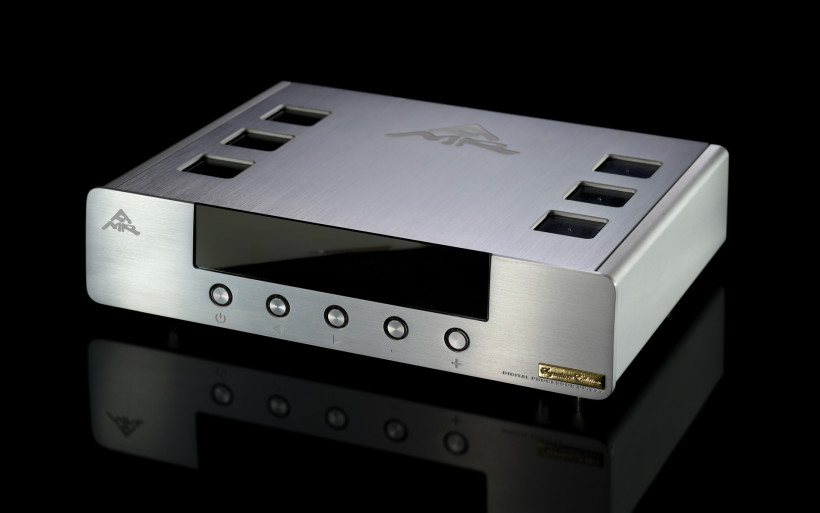 These days more people are aware of the existence of iFi Audio than several years’ older AMR. Come to think of it, this status quo is perfectly understandable. The former company’s portfolio consists of fairly affordable, both mobile and desktop-oriented devices, designed to meet the ever-growing demands of PC audio and headphones-based crowd. And that’s a huge market right there, undoubtedly much bigger than costly products of the heavyweight audiophile sort. Still, iFi Audio is not a typical company, far from it in fact. Among regular products, be it headphone amplifiers or portable sources, in its offering there are some very unusual cases, i.e. iTube2. Who does valve buffers these days? Well, this operation does, it’s known to address fairly unknown audio related issues and target these via very specific products. People working for iFi/AMR have proper know-how to do so. One short glimpse at these operation’s activities on various audio related forums and everything becomes perfectly clear.
These days more people are aware of the existence of iFi Audio than several years’ older AMR. Come to think of it, this status quo is perfectly understandable. The former company’s portfolio consists of fairly affordable, both mobile and desktop-oriented devices, designed to meet the ever-growing demands of PC audio and headphones-based crowd. And that’s a huge market right there, undoubtedly much bigger than costly products of the heavyweight audiophile sort. Still, iFi Audio is not a typical company, far from it in fact. Among regular products, be it headphone amplifiers or portable sources, in its offering there are some very unusual cases, i.e. iTube2. Who does valve buffers these days? Well, this operation does, it’s known to address fairly unknown audio related issues and target these via very specific products. People working for iFi/AMR have proper know-how to do so. One short glimpse at these operation’s activities on various audio related forums and everything becomes perfectly clear.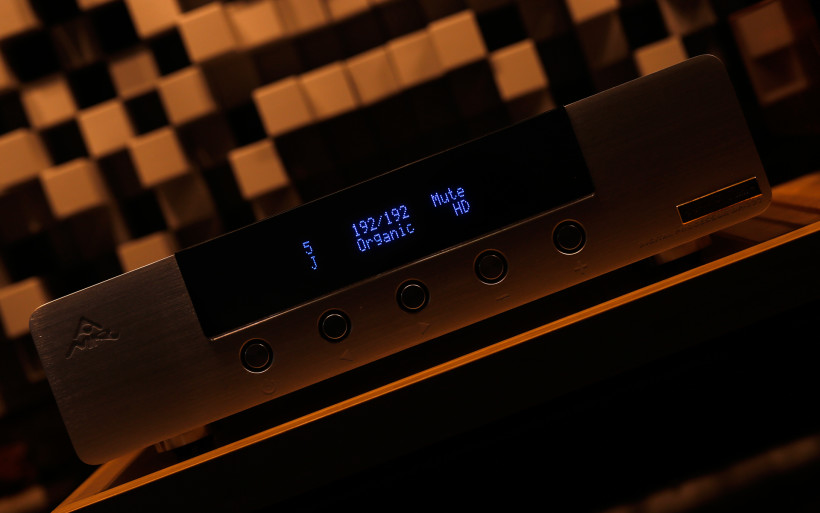 AMR/iFi Team doesn’t hide behind corners with their vast knowledge and is exceptionally keen to share their technical background of both upcoming and already available products. The staff interacts with people on forum type of environments and answer every technical question asked. Hence someone obviously has to know what he’s doing and one name shows up more frequently than any other. This scribe read about Thorsten Loesch’s audio work from many years ago. Needless to say, as a hobbyist and a journalist I was very impressed with his shenanigans back then and still am now. His case is too long to share here, yet the proof is in the web. Years ago this gent became a part of British Abbingdon Music Research, simply known as AMR. If iFi Audio (also his doing) is targeted at audiophiles who are comfortable in +/- $500 range per product, the operation’s parent company is all about devices from $5’000 and above. In any case, AMR was established around 2006 and the very first product it delivered was the CD-77 Reference Class Processor. It’s highly probable that this machine was the very first one loaded with an USB input.
AMR/iFi Team doesn’t hide behind corners with their vast knowledge and is exceptionally keen to share their technical background of both upcoming and already available products. The staff interacts with people on forum type of environments and answer every technical question asked. Hence someone obviously has to know what he’s doing and one name shows up more frequently than any other. This scribe read about Thorsten Loesch’s audio work from many years ago. Needless to say, as a hobbyist and a journalist I was very impressed with his shenanigans back then and still am now. His case is too long to share here, yet the proof is in the web. Years ago this gent became a part of British Abbingdon Music Research, simply known as AMR. If iFi Audio (also his doing) is targeted at audiophiles who are comfortable in +/- $500 range per product, the operation’s parent company is all about devices from $5’000 and above. In any case, AMR was established around 2006 and the very first product it delivered was the CD-77 Reference Class Processor. It’s highly probable that this machine was the very first one loaded with an USB input.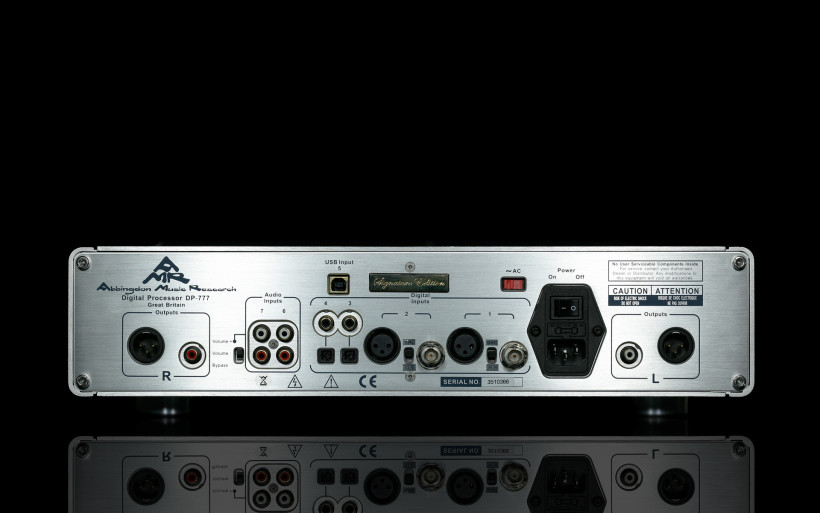 The message behind CD-77 was simple. Its designers aimed at the most vinyl like experience sound wise, yet from a CD machine, whereas the above mentioned USB input served as a major twist back then. The deck was shown at CES in 2007 and the music was played from silver discs and Winamp fed laptop, whereas the latter was remotely operated via HTC Athena… six months prior to the first iPhone premiere. These days this is nothing crazy, but years back to have a functionality of this sort surely was a thing to behold. Vintage multibit d/a converters’ based sources and CD players are still quite popular and said English deck sports a very serious Philips TDA1541A DAC, very hard to buy these days if one is after the good stuff from the old days and not counterfeits.
The message behind CD-77 was simple. Its designers aimed at the most vinyl like experience sound wise, yet from a CD machine, whereas the above mentioned USB input served as a major twist back then. The deck was shown at CES in 2007 and the music was played from silver discs and Winamp fed laptop, whereas the latter was remotely operated via HTC Athena… six months prior to the first iPhone premiere. These days this is nothing crazy, but years back to have a functionality of this sort surely was a thing to behold. Vintage multibit d/a converters’ based sources and CD players are still quite popular and said English deck sports a very serious Philips TDA1541A DAC, very hard to buy these days if one is after the good stuff from the old days and not counterfeits.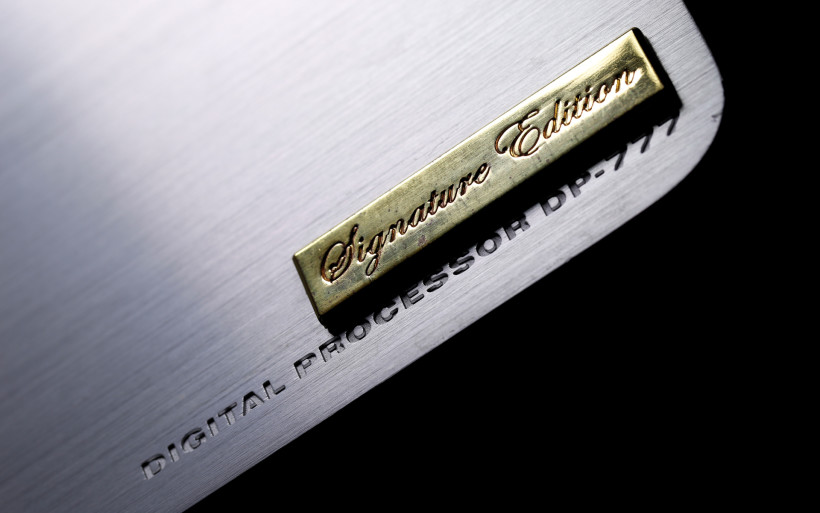 Apparently AMR is deep into the so-called ‘analogue’ sound in general. How deep? This scribe has been told that in its warehouses there’s a large number of said TDA chips stockpiled as according to AMR these are very important ingredients to serve such a fine dish. Just pure guesswork here, but to see ’em used in some fancy and costly, yet at the same time up-to-date product is a highly probable scenario. Time will tell.
Apparently AMR is deep into the so-called ‘analogue’ sound in general. How deep? This scribe has been told that in its warehouses there’s a large number of said TDA chips stockpiled as according to AMR these are very important ingredients to serve such a fine dish. Just pure guesswork here, but to see ’em used in some fancy and costly, yet at the same time up-to-date product is a highly probable scenario. Time will tell.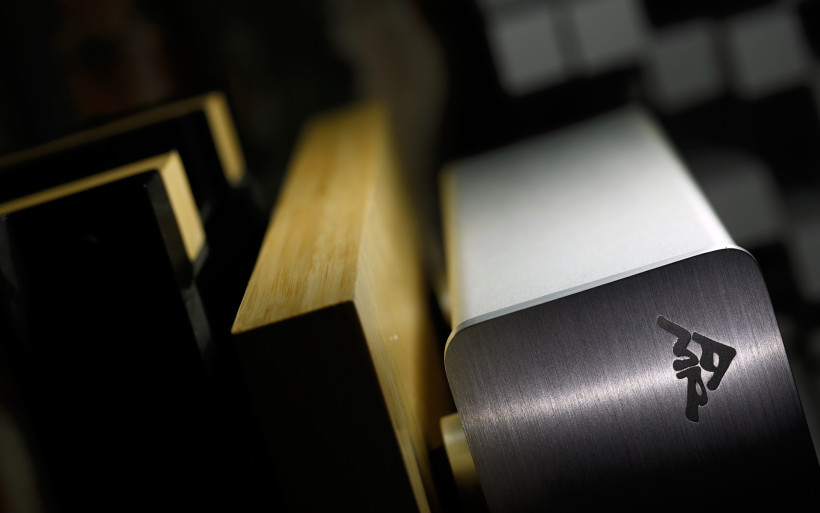 Moving on, CD-77 isn’t the only heavyweight product in the AMR portfolio. Though it’s not crowded in there, that’s a given. Said CD deck aside, there’s the AM-77 stereo integrated amp, PH-77 phono stage and LS-77 monitor. These devices were meant to work together, each is made in dual-mono and single-ended fashion. The whole 77 range is the most costly AMR stuff, one should get himself ready for $8’000 figures and upwards on its devices’ price tags. Quite a bit below there’s the 777 family, to which this review’s hero belongs. It shares the +/- $5’000 space with AM-777 integrated amp and CD-777 silver discs’ spinner. Something smells like redbook, doesn’t it? We’ll get to that shortly.
Moving on, CD-77 isn’t the only heavyweight product in the AMR portfolio. Though it’s not crowded in there, that’s a given. Said CD deck aside, there’s the AM-77 stereo integrated amp, PH-77 phono stage and LS-77 monitor. These devices were meant to work together, each is made in dual-mono and single-ended fashion. The whole 77 range is the most costly AMR stuff, one should get himself ready for $8’000 figures and upwards on its devices’ price tags. Quite a bit below there’s the 777 family, to which this review’s hero belongs. It shares the +/- $5’000 space with AM-777 integrated amp and CD-777 silver discs’ spinner. Something smells like redbook, doesn’t it? We’ll get to that shortly. For now one thing needs to be brought up, the DP-777 isn’t a new product, it’s been around for quite some time, several years in fact. Yet not that long ago its internals received a significant upgrade, hence the SE (Signature Edition) nameplate on its front. The official SE release document is more than four pages long. It’s safe to say that said revamp was extensive. I can’t say whether it upgraded the unit as I never had a pleasure to hear the original version. But it is what it is. And what is, looks very tasty and promising.
For now one thing needs to be brought up, the DP-777 isn’t a new product, it’s been around for quite some time, several years in fact. Yet not that long ago its internals received a significant upgrade, hence the SE (Signature Edition) nameplate on its front. The official SE release document is more than four pages long. It’s safe to say that said revamp was extensive. I can’t say whether it upgraded the unit as I never had a pleasure to hear the original version. But it is what it is. And what is, looks very tasty and promising.
Build
There’s a number of ways to build a decently sounding DAC. It can have single-ended or balanced topology, be based on a ΔΣ/R2R/FPGA + low pass filtering type, with op-amps/output transformers/valves output stage. Let’s add various buffers, upsamplers or NOS approach. Hi-Res or Redbooks. DSD, PCM or both types of files served. Fancy CNC milled chassis, wooden box or something crude a’la bent steel plates. And that’s not all of it. Point being, the available possibilities are generous. To pick merely one solution from each group seems somewhat like a limitation, so much good stuff out there. Yet truth be told, once properly implemented, each can deliver more than decent outcome. What about AMR DP-777SE? What kind of an animal is it?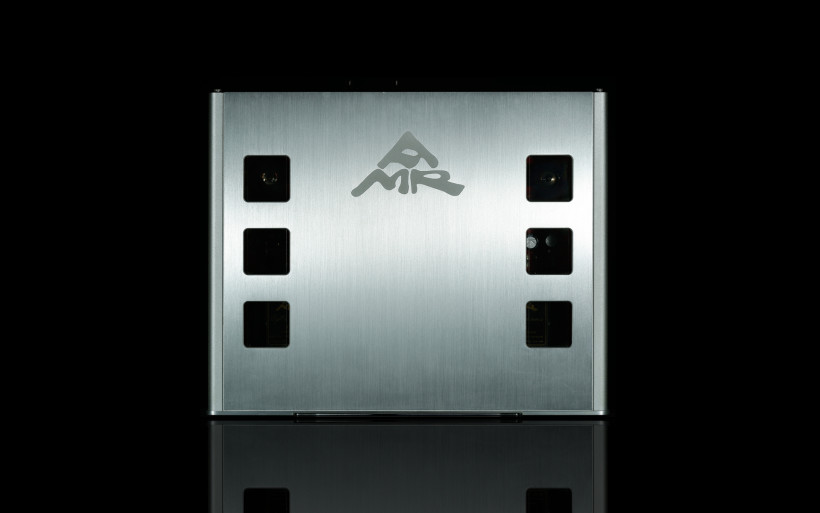 For starters, AMR’s lucky number seven is a dual-mono single-ended affair with two d/a modules on-board and a valves’ based output stage to seal the deal with harmonically rich finish. Tubes make the unit flexible to at least some extent. And a pair of different d/a conversion methods is promising to say the least. The DP-777SE is on the bigger side, it measures (W x H x D) 45 x 12 x cm and weighs 11,5 kilograms. Frequency response is 20 Hz – 20 Khz, SNR is >100 dB (A-weighted), THD+N is <0,3%, whereas dynamic range and channel separation figures are the same, namely >90 dB. The product is available in black and silver finishes and can be operated anywhere in the world (115/230V). Power consumption in standby and once turned on is <1W and <60W respectively.
For starters, AMR’s lucky number seven is a dual-mono single-ended affair with two d/a modules on-board and a valves’ based output stage to seal the deal with harmonically rich finish. Tubes make the unit flexible to at least some extent. And a pair of different d/a conversion methods is promising to say the least. The DP-777SE is on the bigger side, it measures (W x H x D) 45 x 12 x cm and weighs 11,5 kilograms. Frequency response is 20 Hz – 20 Khz, SNR is >100 dB (A-weighted), THD+N is <0,3%, whereas dynamic range and channel separation figures are the same, namely >90 dB. The product is available in black and silver finishes and can be operated anywhere in the world (115/230V). Power consumption in standby and once turned on is <1W and <60W respectively.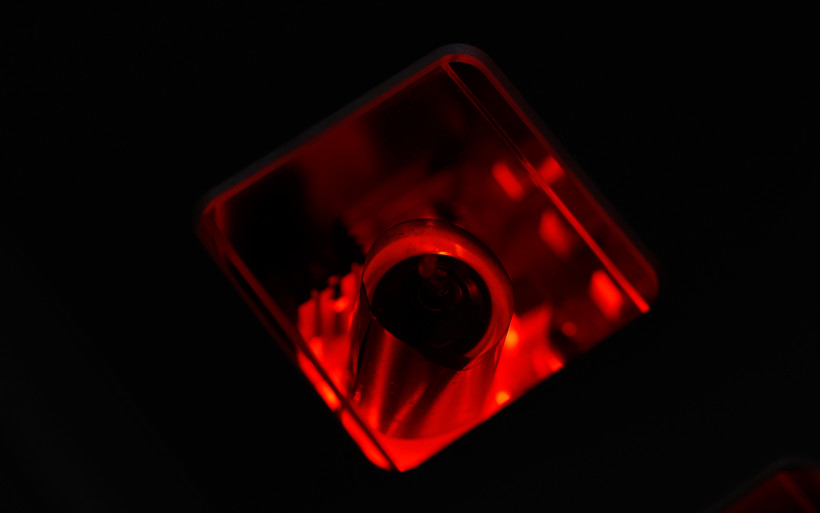 AMR DP-777SE is built like a tank, it’s easily seen that this is a serious device to begin with. British deck’s enclosure is of full-sized sort and solely made out of aluminium elements. The front sports a big monochromatic display. Blue digits on black background are served in highly readable fashion. There’s an option to dim these or turn them off completely. Lots of information are shown as well; filtering, bitrate, volume level, selected digital input and jitter lock. The last feature is subject to AMR’s proprietary GMT system clock tracker. Once ‘J’ letter blinks, GMT is in search mode and when it’s stable, said letter is constantly displayed. A bit below there are five buttons in total; power on/off, a pair of input selectors and another one responsible for volume adjustments. Once pressed, each button loaded with a nice blue ring lights up.
AMR DP-777SE is built like a tank, it’s easily seen that this is a serious device to begin with. British deck’s enclosure is of full-sized sort and solely made out of aluminium elements. The front sports a big monochromatic display. Blue digits on black background are served in highly readable fashion. There’s an option to dim these or turn them off completely. Lots of information are shown as well; filtering, bitrate, volume level, selected digital input and jitter lock. The last feature is subject to AMR’s proprietary GMT system clock tracker. Once ‘J’ letter blinks, GMT is in search mode and when it’s stable, said letter is constantly displayed. A bit below there are five buttons in total; power on/off, a pair of input selectors and another one responsible for volume adjustments. Once pressed, each button loaded with a nice blue ring lights up.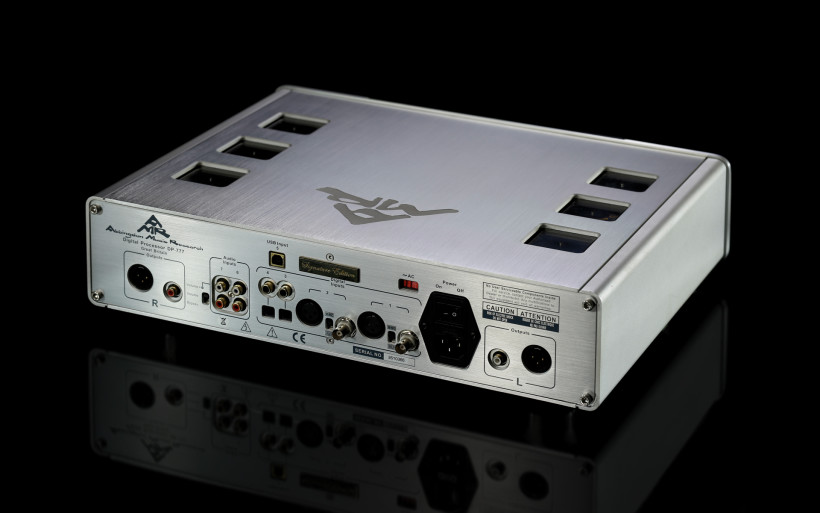 AMR DP-777SE’s rear is crowded. It sports one RCA and one XLR output and a pair of RCA inputs. This indicates that said English machine can work solely as a direct-coupled preamplifier. And since we’re at it, its volume control can be mechanically bypassed via a small switch, to be found near analogue inputs. The digital section is generous, way above what’s regularly found in sources. There are two AES/EBU, two BNCs, two TOSLINKs, two coaxial inputs and one USB type B seals the deal. Yes, that’s nine inputs in total. AES/EBU and BNC case is peculiar, though. A switch nearby matches the impedance to one or the other. But the most important part is that these inputs are tube driven, subject to AMR’s proprietary VDi circuitry. This is a rare sight to be seen. Moving on, AMR DP-777SE’s back is also equipped with a 110-230V switch and an IEC socket loaded with a self-replaceable fuse.
AMR DP-777SE’s rear is crowded. It sports one RCA and one XLR output and a pair of RCA inputs. This indicates that said English machine can work solely as a direct-coupled preamplifier. And since we’re at it, its volume control can be mechanically bypassed via a small switch, to be found near analogue inputs. The digital section is generous, way above what’s regularly found in sources. There are two AES/EBU, two BNCs, two TOSLINKs, two coaxial inputs and one USB type B seals the deal. Yes, that’s nine inputs in total. AES/EBU and BNC case is peculiar, though. A switch nearby matches the impedance to one or the other. But the most important part is that these inputs are tube driven, subject to AMR’s proprietary VDi circuitry. This is a rare sight to be seen. Moving on, AMR DP-777SE’s back is also equipped with a 110-230V switch and an IEC socket loaded with a self-replaceable fuse.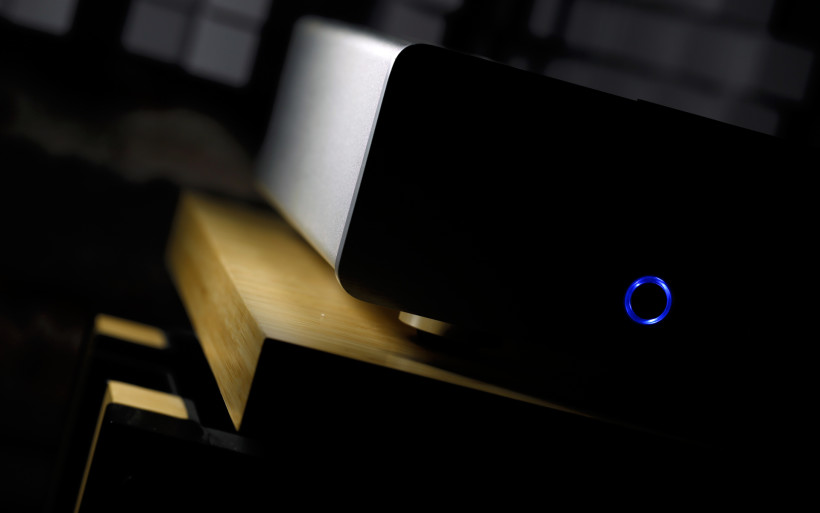 Let’s take a look at our hero’s top plate. It’s not only aluminium based, but it also sports a rather large manufacturer’s logo and six acrylic windows it total. Hence some of DP-777SE’s innards are quite visible in the process, especially tubes. As per usual, that’s the main focus point right there. The product sits on four rubber feet, placed in round aluminium rings. Each foot divides into four smaller tabs. Presumably because of this solution, DP-777SE isn’t wobbly at all even on rough surfaces. The device is very decently made. Subjectively it looks honest and to operate it is a pleasure. Every option there is can be executed via small, aluminium-based RC. From pure usability perspective everything works as intended in case of a machine provided to yours truly. Several months long and rather extensive usage serves as a solid proof. Not even once I had an issue with this review’s hero. Let’s take a peek under its hood.
Let’s take a look at our hero’s top plate. It’s not only aluminium based, but it also sports a rather large manufacturer’s logo and six acrylic windows it total. Hence some of DP-777SE’s innards are quite visible in the process, especially tubes. As per usual, that’s the main focus point right there. The product sits on four rubber feet, placed in round aluminium rings. Each foot divides into four smaller tabs. Presumably because of this solution, DP-777SE isn’t wobbly at all even on rough surfaces. The device is very decently made. Subjectively it looks honest and to operate it is a pleasure. Every option there is can be executed via small, aluminium-based RC. From pure usability perspective everything works as intended in case of a machine provided to yours truly. Several months long and rather extensive usage serves as a solid proof. Not even once I had an issue with this review’s hero. Let’s take a peek under its hood. Getting to DP-777SE’s innards is quite simple. One has to unscrew its rear, four screws which hold its top cover are to be handled next, then said element slides off and presto. Easy-peasy. What’s seen is a large PCB and two smaller ones nearby. The smallest one is AMR’s proprietary USB receiver. They don’t use Amanero or anything of this sort but roll with their own. It’s is XMOS based and quite similar to solutions seen in iFi Audio equipment. No surprises there. Digital board is peculiar. It sports two d/a circuits and bears the HD Gemini Engine name. This indicates that two d/a converters of the same or at least very similar breed are used, but that’s not the case. One is based on a 32 bit chip and is meant to be used with hi-res files. The other part of said module sports four vintage 16 bit R2R UDA1305AT units, presumably made by Phillips and closely related to the famous TDA1543A jewel. To increase SNR, two pieces per channel are used, which gives us four of these critters in total, hence quad-core marketing name is given. Makes sense, doesn’t it? The latter DAC is meant to be used with Redbooks, hence only 16 bit /44.1 and 48 kHz are viable. An FPGA logic glues everything together, it handles buffering, both DSP and ISM (Intelligent System Memory) duties etc. To combat ringing, a user can use one of several available filters. Apodising, minimum phase, traditional and organic work with HD d/a circuitry. Classic one gets two bit-perfect options, whereas one of the two has sinc(x) analogue filtering applied. Possibilities, possibilities, possibilities.
Getting to DP-777SE’s innards is quite simple. One has to unscrew its rear, four screws which hold its top cover are to be handled next, then said element slides off and presto. Easy-peasy. What’s seen is a large PCB and two smaller ones nearby. The smallest one is AMR’s proprietary USB receiver. They don’t use Amanero or anything of this sort but roll with their own. It’s is XMOS based and quite similar to solutions seen in iFi Audio equipment. No surprises there. Digital board is peculiar. It sports two d/a circuits and bears the HD Gemini Engine name. This indicates that two d/a converters of the same or at least very similar breed are used, but that’s not the case. One is based on a 32 bit chip and is meant to be used with hi-res files. The other part of said module sports four vintage 16 bit R2R UDA1305AT units, presumably made by Phillips and closely related to the famous TDA1543A jewel. To increase SNR, two pieces per channel are used, which gives us four of these critters in total, hence quad-core marketing name is given. Makes sense, doesn’t it? The latter DAC is meant to be used with Redbooks, hence only 16 bit /44.1 and 48 kHz are viable. An FPGA logic glues everything together, it handles buffering, both DSP and ISM (Intelligent System Memory) duties etc. To combat ringing, a user can use one of several available filters. Apodising, minimum phase, traditional and organic work with HD d/a circuitry. Classic one gets two bit-perfect options, whereas one of the two has sinc(x) analogue filtering applied. Possibilities, possibilities, possibilities.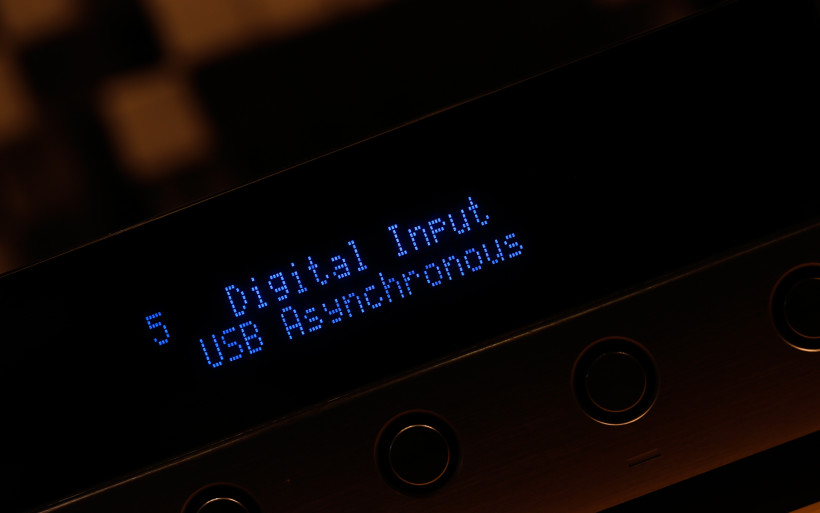 The analogue part of DP-777SE’s inside looks like one built by an enthusiast for enthusiasts. It’s a power supply in large part. Each channel has its own transformer and these aren’t off the shelf but made by AMR. The same story goes with crucial capacitors in the signal path. I’m not sure what types exactly these are, but there’s no exaggeration in putting ’em in the boutique bag. Analogue part of DP-777SE is based on NOS GE5670 JAN double triodes, one per channel. There’s an interesting story behind these. Very similar 6922 tubes gained enormous popularity over the years, whereas 5670 with its slightly different pinout flew under the radar and waited patiently to be discovered. Not only this valve is affordable, very decently sounding and quite available, its JAN (Joint Army & Navy) version is more rugged in comparison to stock one. It’s said to sound very good, especially for the money and the only thing that needs to be done to exploit that is a simple adapter, which is of course included in DP-777SE.
The analogue part of DP-777SE’s inside looks like one built by an enthusiast for enthusiasts. It’s a power supply in large part. Each channel has its own transformer and these aren’t off the shelf but made by AMR. The same story goes with crucial capacitors in the signal path. I’m not sure what types exactly these are, but there’s no exaggeration in putting ’em in the boutique bag. Analogue part of DP-777SE is based on NOS GE5670 JAN double triodes, one per channel. There’s an interesting story behind these. Very similar 6922 tubes gained enormous popularity over the years, whereas 5670 with its slightly different pinout flew under the radar and waited patiently to be discovered. Not only this valve is affordable, very decently sounding and quite available, its JAN (Joint Army & Navy) version is more rugged in comparison to stock one. It’s said to sound very good, especially for the money and the only thing that needs to be done to exploit that is a simple adapter, which is of course included in DP-777SE. One half of each 5670 tube amplifies the signal whereas the other buffers it. Shottky diodes are used for rectification and filtering purposes. There are no solid-state devices in the signal path, no op-amps or transistors, just valves and capacitors. Let me stress again that such a design looks and feels very music-oriented and solid. But one of the most surprising things about DP-777SE is that its BNC inputs are valved, a single 6H11P double triode of NOS sort handles said task. Very well-written SPDIF material is to be found on the AMR site, hence there’s no point to dive into this matter here. But the takeaway is that – according to said company – valved SPDIF input makes a perfect square wave on the oscilloscope. According to AMR, some analogue problems need analogue solutions. And lastly, the volume control. It’s a stepped attenuator based on electronic switches and embedded inside a chip. So the volume adjustment happens in the analogue domain. In addition, there are no operational amplifiers built-in. Let’s get to the sound.
One half of each 5670 tube amplifies the signal whereas the other buffers it. Shottky diodes are used for rectification and filtering purposes. There are no solid-state devices in the signal path, no op-amps or transistors, just valves and capacitors. Let me stress again that such a design looks and feels very music-oriented and solid. But one of the most surprising things about DP-777SE is that its BNC inputs are valved, a single 6H11P double triode of NOS sort handles said task. Very well-written SPDIF material is to be found on the AMR site, hence there’s no point to dive into this matter here. But the takeaway is that – according to said company – valved SPDIF input makes a perfect square wave on the oscilloscope. According to AMR, some analogue problems need analogue solutions. And lastly, the volume control. It’s a stepped attenuator based on electronic switches and embedded inside a chip. So the volume adjustment happens in the analogue domain. In addition, there are no operational amplifiers built-in. Let’s get to the sound.
Sound
In order to properly test the AMR DP-777SE, only one main scenario had to be conducted. This device was directly compared to LampizatOr Golden Gate (Psvane WE101D-L + KR Audio 5U4G Ltd.), whereas the other reference devices remained untouched. Trilogy 925 integrated amplifier and Boenicke W8 were on duty again. Additionally FirstWatt F7 and Fikus Electric P17 were used too. One thing needs to be said loud and clear, though. AMR’s product doesn’t do DSD, whereas all LampizatOrs are all about that. There’s no common ground here really. The only thing I could do to witness both devices’ virtues was to allow ’em to do what they do best. Hence Polish DAC was fed with native DSD or PCM material upsampled to DSD, whereas DP-777SE handled PCM in its native form. This journalist thinks that there are no clear winners here and he’s far from stating that one files type is better than the other. In Polish case DSD is a must, that’s true. But the other DAC was built with i.e. Redbooks on mind and it’d be a mistake not to exploit that. It was also important to find out how DP-777SE’s volume control will fare against a stand-alone preamplifier. Here Sanders Sound Systems Magtech + preamplifier combo was used.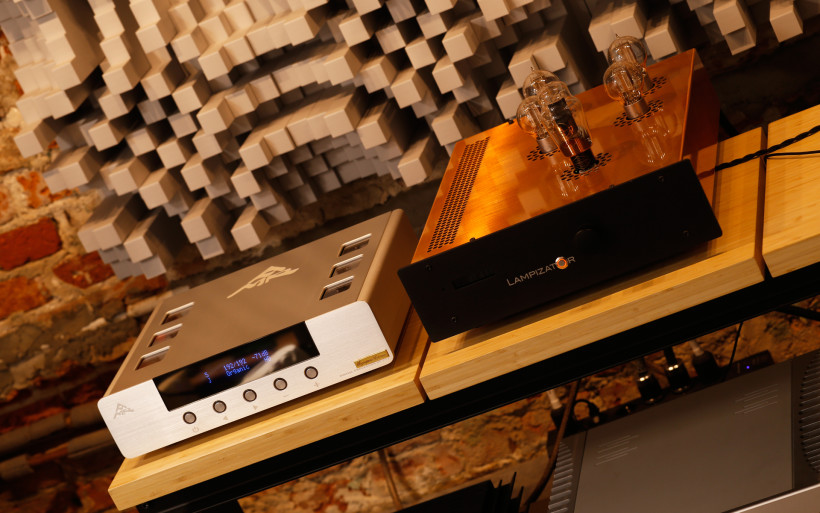 When tubes in a DAC come into play, it’s difficult to predict the outcome, it really is. Yours truly witnessed many times that any assumptions in such cases are unnecessary. For the sake of the well-known stereotype let’s assume that valves = warm and rich sound. And to some degree that’s the story with this review’s hero. But there’s more than that in case of said device, so much more. For starters, one thing is very clearly audible, this machine was designed to sound in a very musical way in general. By that one should understand saturation, richness, vividness and tangibility. The emphasis is surely put on these. The only question is this: at what cost? Because there is one, eh? Well, this time around not really. And even if so, not in a direct and crippling way.
When tubes in a DAC come into play, it’s difficult to predict the outcome, it really is. Yours truly witnessed many times that any assumptions in such cases are unnecessary. For the sake of the well-known stereotype let’s assume that valves = warm and rich sound. And to some degree that’s the story with this review’s hero. But there’s more than that in case of said device, so much more. For starters, one thing is very clearly audible, this machine was designed to sound in a very musical way in general. By that one should understand saturation, richness, vividness and tangibility. The emphasis is surely put on these. The only question is this: at what cost? Because there is one, eh? Well, this time around not really. And even if so, not in a direct and crippling way.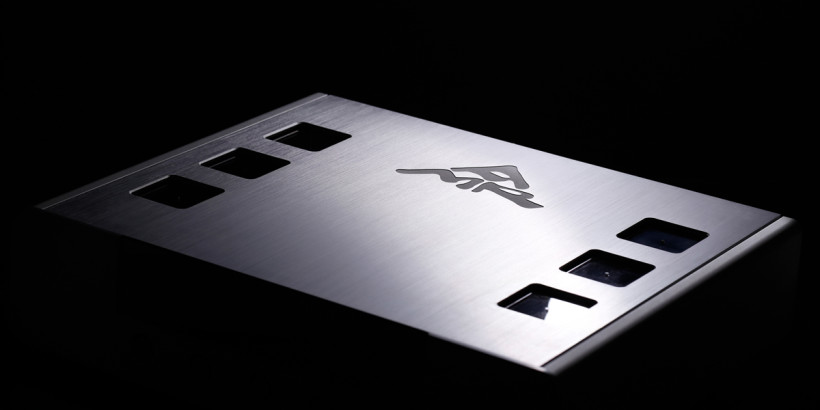 Although rich sounding, AMR DP-777SE doesn’t put extra sugar coating on music, which is heard especially once this machine’s input is auditioned in classic and not HD mode. It doesn’t elevate the temperature excessively, it doesn’t paint a picture more colorful than desired. Let me elaborate here for a bit. The best DACs known to me (reference Golden Gate aside) sport the same feature, which is beyond reach of most sources’ out there. Organic approach is on the table. And by that one should understand vividness in its full glory; this lifelike, literally wet and very tangible tissue that coats the sound. It’s difficult to describe this highly desired phenomenon more precisely. But once it’s audible, a well-seasoned listener will recognize it in an instant. It appeared a handful of times with certain PCM1704 sources, at least that’s my experience. And now, AMR DP-777SE performance leaves no doubt. Said virtue is present in this review’s main dish as well, which leads to one simple conclusion. It doesn’t sound artificial at all and no matter the scenario. And that’s a very big, surely noticeable plus.
Although rich sounding, AMR DP-777SE doesn’t put extra sugar coating on music, which is heard especially once this machine’s input is auditioned in classic and not HD mode. It doesn’t elevate the temperature excessively, it doesn’t paint a picture more colorful than desired. Let me elaborate here for a bit. The best DACs known to me (reference Golden Gate aside) sport the same feature, which is beyond reach of most sources’ out there. Organic approach is on the table. And by that one should understand vividness in its full glory; this lifelike, literally wet and very tangible tissue that coats the sound. It’s difficult to describe this highly desired phenomenon more precisely. But once it’s audible, a well-seasoned listener will recognize it in an instant. It appeared a handful of times with certain PCM1704 sources, at least that’s my experience. And now, AMR DP-777SE performance leaves no doubt. Said virtue is present in this review’s main dish as well, which leads to one simple conclusion. It doesn’t sound artificial at all and no matter the scenario. And that’s a very big, surely noticeable plus.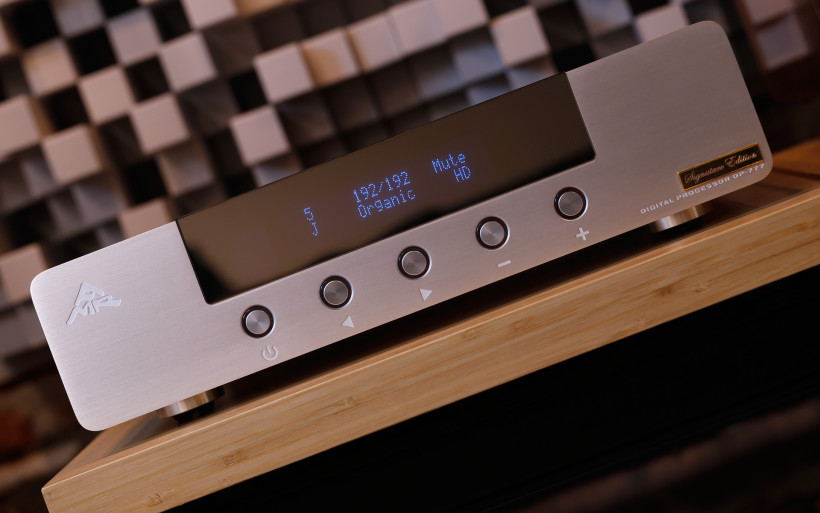 Let’s get back to PCM1704 based DACs for a second. In their case, at least those known to me, there’s an audible tonal balance shift towards lower mid regions. This translates to the outcome slightly dimmed than usual and top finish served in a very subtle way in the process; present, yet never overbearing or too lit-up. AMR DP-777SE is a different beast. Abovementioned tangibility aside, no dimming takes place in its case. Audible FR’s top is perfectly present and the sensation of wanting to have more of it wasn’t there during long months of usage, which is good. The same story is with things down below. Again, no withdrawal or bumps in mids region. The bass is different, though. It doesn’t reach exceptionally low, but is fast. And since there are no complaints about its texturing, hollowness doesn’t occur. Some people would probably want to have a bit more of ‘this’ and a bit less of ‘that’, as per usual. But for this scribe, AMR DP-777SE tonal balance is a textbook case of a job well-done in this regard. To paint even more understandable picture, let’s move to this machine’s direct competitor.
Let’s get back to PCM1704 based DACs for a second. In their case, at least those known to me, there’s an audible tonal balance shift towards lower mid regions. This translates to the outcome slightly dimmed than usual and top finish served in a very subtle way in the process; present, yet never overbearing or too lit-up. AMR DP-777SE is a different beast. Abovementioned tangibility aside, no dimming takes place in its case. Audible FR’s top is perfectly present and the sensation of wanting to have more of it wasn’t there during long months of usage, which is good. The same story is with things down below. Again, no withdrawal or bumps in mids region. The bass is different, though. It doesn’t reach exceptionally low, but is fast. And since there are no complaints about its texturing, hollowness doesn’t occur. Some people would probably want to have a bit more of ‘this’ and a bit less of ‘that’, as per usual. But for this scribe, AMR DP-777SE tonal balance is a textbook case of a job well-done in this regard. To paint even more understandable picture, let’s move to this machine’s direct competitor.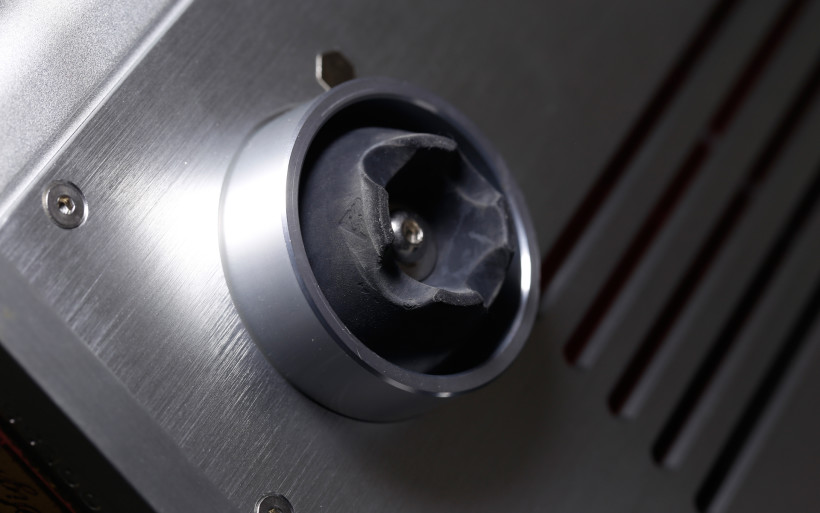 First things first. My reference Lampizator Golden Gate is sold for about €25’000 in Poland, whereas AMR DP-777SE can be had for a bit less than €5’000. The price gap between compared products is substantial to say the least. But if one would have thought that the skirmish between the two was one-sided, he’d be deadly wrong. It wasn’t. The quality difference surely wasn’t of night and day difference. On the contrary to general sound signature as both decks represent two unique flavourings. Hence let me be clear here, the law of diminishing returns in case of my reference didn’t kick in as well as its attitude is greatly different. Past many days of comparisons, it’s safe to say that in the end everything comes down to what outcome one’s individual pair of ears would like to hear.
First things first. My reference Lampizator Golden Gate is sold for about €25’000 in Poland, whereas AMR DP-777SE can be had for a bit less than €5’000. The price gap between compared products is substantial to say the least. But if one would have thought that the skirmish between the two was one-sided, he’d be deadly wrong. It wasn’t. The quality difference surely wasn’t of night and day difference. On the contrary to general sound signature as both decks represent two unique flavourings. Hence let me be clear here, the law of diminishing returns in case of my reference didn’t kick in as well as its attitude is greatly different. Past many days of comparisons, it’s safe to say that in the end everything comes down to what outcome one’s individual pair of ears would like to hear.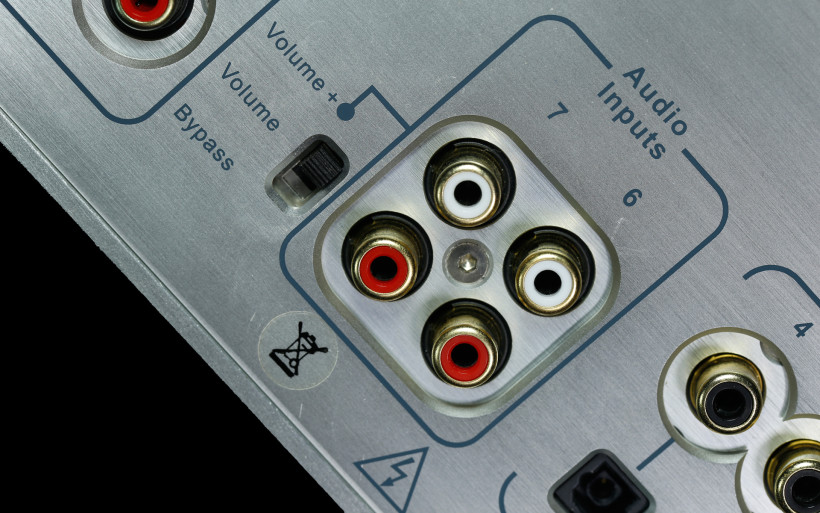 The very first noticeable thing is how differently bass is served. Golden Gate has it more extended downstairs and more substantial in general, yet with calm music also a bit slower. On tracks like i.e. “Runaljod” from the “Runaljod – Ragnarok” album by Wardruna this was very obvious and the same story goes with Smadj’s “Zakari” from “Spleen” LP. It’s either more punch but in slightly slower fashion or the exact opposite. Hence apples and oranges, pick yours. With certain, rather poorly recorded music of i.e. early AC/DC or (to a degree) Guns N’ Roses sort, LampizatOr’s more muscular and substantial input is both desirable and beneficial, but that’s not always the case. More modern sound a’la The Battles, Lorde or Massive Attack is a completely different, sometimes the opposite story. Though this is a subjective matter, one’s individual pair of ears knows best what needs to be emphasized more and what less. The takeaway is that if more body and downstairs shove is needed, Golden Gate will happily provide. And if a bit more speed and a linear tonal balance are on the table, British machine delivers. Yet make no mistake, AMR DP-777SE doesn’t sound thin at all, on the contrary in fact. It simply is slimmer in comparison to Golden Gate.
The very first noticeable thing is how differently bass is served. Golden Gate has it more extended downstairs and more substantial in general, yet with calm music also a bit slower. On tracks like i.e. “Runaljod” from the “Runaljod – Ragnarok” album by Wardruna this was very obvious and the same story goes with Smadj’s “Zakari” from “Spleen” LP. It’s either more punch but in slightly slower fashion or the exact opposite. Hence apples and oranges, pick yours. With certain, rather poorly recorded music of i.e. early AC/DC or (to a degree) Guns N’ Roses sort, LampizatOr’s more muscular and substantial input is both desirable and beneficial, but that’s not always the case. More modern sound a’la The Battles, Lorde or Massive Attack is a completely different, sometimes the opposite story. Though this is a subjective matter, one’s individual pair of ears knows best what needs to be emphasized more and what less. The takeaway is that if more body and downstairs shove is needed, Golden Gate will happily provide. And if a bit more speed and a linear tonal balance are on the table, British machine delivers. Yet make no mistake, AMR DP-777SE doesn’t sound thin at all, on the contrary in fact. It simply is slimmer in comparison to Golden Gate.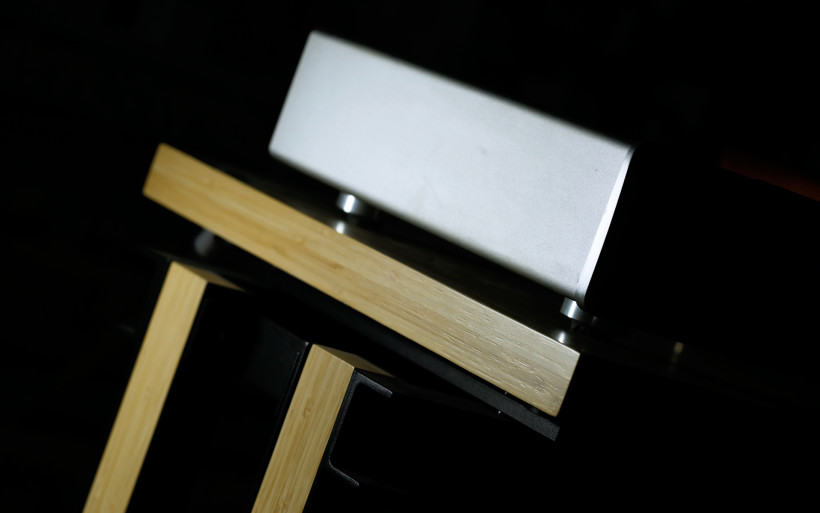 In terms of mids, both devices are very comparable and competent. No veil is put on this crucial FR part, it’s perfectly audible and smooth. If I had to point out any difference here, it’s related to soundstaging, we’ll get to that part in a bit. For now this scribe has nothing to brag about. Much more distinctive differences are in the upper region. AMR DP-777SE has these more shiny, shorter and grainier. Here Golden Gate is better. Yes, a bit withdrawn in comparison, yet slightly weightier, with longer decay and more subtle attitude in general. Again, the poorer recording, the more intensely this is heard. For instance, “Welcome To The Jungle” by Guns N’ Roses showed clearly what’s going on and in favor of Golden Gate. But when the “Gambling House Massacre” track from Zatoichi masterpiece (with phenomenal Takeshi ‘Beat’ Kitano as the main man) was on, it was a matter of individual preferences and nothing more. Yours truly could name at least several similarly polarizing examples here additionally, but the gist is that the outcome was really music dependent. One thing is certain, though. AMR DP-777SE is more lit-up upstairs and ethereal, whereas Golden Gate is weightier, longer and more substantial there.
In terms of mids, both devices are very comparable and competent. No veil is put on this crucial FR part, it’s perfectly audible and smooth. If I had to point out any difference here, it’s related to soundstaging, we’ll get to that part in a bit. For now this scribe has nothing to brag about. Much more distinctive differences are in the upper region. AMR DP-777SE has these more shiny, shorter and grainier. Here Golden Gate is better. Yes, a bit withdrawn in comparison, yet slightly weightier, with longer decay and more subtle attitude in general. Again, the poorer recording, the more intensely this is heard. For instance, “Welcome To The Jungle” by Guns N’ Roses showed clearly what’s going on and in favor of Golden Gate. But when the “Gambling House Massacre” track from Zatoichi masterpiece (with phenomenal Takeshi ‘Beat’ Kitano as the main man) was on, it was a matter of individual preferences and nothing more. Yours truly could name at least several similarly polarizing examples here additionally, but the gist is that the outcome was really music dependent. One thing is certain, though. AMR DP-777SE is more lit-up upstairs and ethereal, whereas Golden Gate is weightier, longer and more substantial there.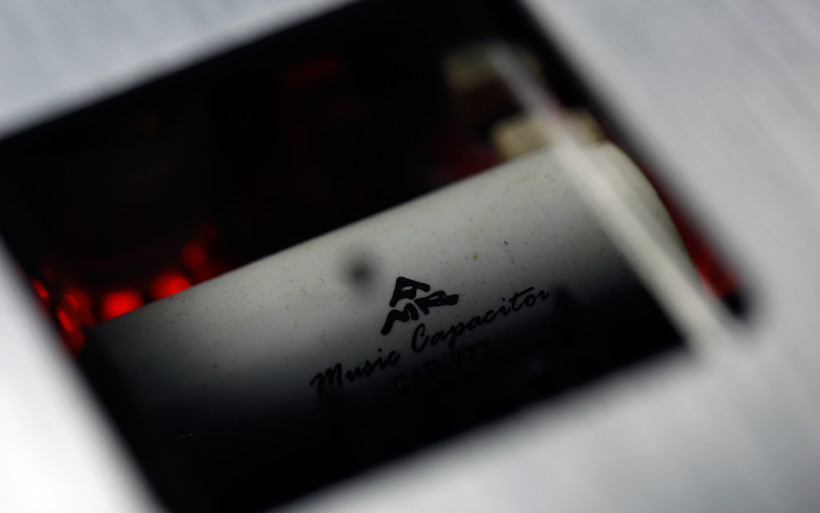 Moving on, another differences are in the imaging. Both products do different things with it. LampizatOr Golden Gate sounds bigger and more bluntly sketches instruments’ bodies. It makes these exceptionally present and three-dimensional in the process. AMR DP-777SE is more suave in this regard, not that obvious so to speak. Although this device also sports a very generous sound stage, it makes it involving in a different way. Golden Gate is about making music here and now, whereas the British deck tends to take a listener to its place, which translates to the very first row slightly pushed back, yet still perfectly audible. And additionally, since AMR’s deck sounds brighter, its image is more open and airier. My reference also doesn’t put any emphasis on any space fragments in particular, whereas DP-777SE tends to draw one’s attention towards events between the speakers. Again, two different presentation types are the case and both as equally enjoyable. But what’s the most important for this scribe is the fact that if a recording itself paints a peculiar picture, both sources show it very clearly. Let’s invoke “Zefiro Torna” from “Monteverdi: A Trace Of Grace” by Michael Goddard. I have no idea where this masterpiece was recorded, but the environment itself heard in this track is simply glorious. The point is that both DACs show it off like it was nothing and the same story goes with each instrument there is. Pinpoint accuracy surely comes as a part of both packages. Yet what’s quite striking is the depth, AMR DP-777SE keeps up with my reference with ease and – to be perfectly honest – yours truly suspected that that’s where one of the biggest differences will be.
Moving on, another differences are in the imaging. Both products do different things with it. LampizatOr Golden Gate sounds bigger and more bluntly sketches instruments’ bodies. It makes these exceptionally present and three-dimensional in the process. AMR DP-777SE is more suave in this regard, not that obvious so to speak. Although this device also sports a very generous sound stage, it makes it involving in a different way. Golden Gate is about making music here and now, whereas the British deck tends to take a listener to its place, which translates to the very first row slightly pushed back, yet still perfectly audible. And additionally, since AMR’s deck sounds brighter, its image is more open and airier. My reference also doesn’t put any emphasis on any space fragments in particular, whereas DP-777SE tends to draw one’s attention towards events between the speakers. Again, two different presentation types are the case and both as equally enjoyable. But what’s the most important for this scribe is the fact that if a recording itself paints a peculiar picture, both sources show it very clearly. Let’s invoke “Zefiro Torna” from “Monteverdi: A Trace Of Grace” by Michael Goddard. I have no idea where this masterpiece was recorded, but the environment itself heard in this track is simply glorious. The point is that both DACs show it off like it was nothing and the same story goes with each instrument there is. Pinpoint accuracy surely comes as a part of both packages. Yet what’s quite striking is the depth, AMR DP-777SE keeps up with my reference with ease and – to be perfectly honest – yours truly suspected that that’s where one of the biggest differences will be. The last thing on the ‘to do’ list was to find out how competent AMR DP-777SE’s volume control is. In order to do that, Sanders Sound Systems setup was on. The changes between the American preamplifier and DP-777SE all by itself were heard in a heartbeat. The main one is in thickness and control; the former is meatier, especially downstairs. And holds tighter grip over speakers in use. This translates to the lowest octaves more present, punchier and feistier in the process. The music is also more focused and the emphasis is put on the first row in front of a listener. What DP-777SE does instead is more suave approach and dreamier character of what’s heard. It’s more polite, yes, but not fuzzier or warmer. It offers more music in music, but at the cost of agility and density. The outcome depends on used electronics, though. For instance, with FirstWatt F7 and Fikus Electric P17, the American preamplifier addition wasn’t beneficial. But once Boenicke W8 came into play, the outcome was the exact opposite. All things considered, DP-777SE’s volume control held its ground firmly against a separate $5’000 deck. Yet whether it should be used remains dependant on the rest of the setup.
The last thing on the ‘to do’ list was to find out how competent AMR DP-777SE’s volume control is. In order to do that, Sanders Sound Systems setup was on. The changes between the American preamplifier and DP-777SE all by itself were heard in a heartbeat. The main one is in thickness and control; the former is meatier, especially downstairs. And holds tighter grip over speakers in use. This translates to the lowest octaves more present, punchier and feistier in the process. The music is also more focused and the emphasis is put on the first row in front of a listener. What DP-777SE does instead is more suave approach and dreamier character of what’s heard. It’s more polite, yes, but not fuzzier or warmer. It offers more music in music, but at the cost of agility and density. The outcome depends on used electronics, though. For instance, with FirstWatt F7 and Fikus Electric P17, the American preamplifier addition wasn’t beneficial. But once Boenicke W8 came into play, the outcome was the exact opposite. All things considered, DP-777SE’s volume control held its ground firmly against a separate $5’000 deck. Yet whether it should be used remains dependant on the rest of the setup.
Summary
Digital audio is getting better and better, undoubtedly. These days even quite affordable DAC can sound really good, much better than times more expensive product from merely several years ago. That’s how rapid things are in the digital domain. The AMR DP-777SE isn’t new, far from it in fact. Still, that’s one of the very best sources known to me. Yes, it’s that good.
The AMR DP-777SE is very decently made and well-thought. It surely looks and feels like a $5’000 machine and functionality wise is generous to say the least. Multiple digital inputs, various filtering methods, two d/a conversion circuits on-board, great volume control and valved output stage are perfectly valid reasons. AMR/iFi engineers aren’t into regular by the book stuff, they push themselves to cover as many bases as possible and that’s only beneficial for a customer.
But the best part of the AMR DP-777SE is its sound quality. This deck is a very posh, suave performer. Past several minutes long listen it becomes obvious that it was made and tuned by someone who feels the music. Said British machine is not about speed, resolution, directness or absolute transparency. Vivid, organic, smooth and exceptionally tangible approach is served instead, sprinkled by generous detailing and imaging. It sounds like a vintage source indeed, but of great quality nonetheless. And lastly, the AMR DP-777SE held its ground firmly against my current and several times pricier reference source. It was more about different flavorings between these two rather than anything else.
The AMR DP-777SE rings all my subjective bells in the right way, hence it stays. Not because it’s needed, no. Yet surely is wanted. For pure pleasure that is. And that’s the best recommendation this scribe can give to said British deck. ‘Till next time.
Associated equipment:
- Amplifier: Trilogy 925, Sanders Sound Systems Magtech + preamplifier, FirstWatt F7
- Sources: Lampizator Golden Gate (Psvane WE101D-L + KR Audio 5U4G Ltd. Ed.)
- Speakers: Boenicke Audio W8
- Transports: Asus UX305LA
- Speaker cables: Forza AudioWorks Noir Concept, Audiomica Laboratory Celes Excellence
- Interconnects: Forza AudioWorks Noir, Audiomica Laboratory Erys Excellence
- Power supply: Gigawatt PF-2 + Gigawatt LC-2 MK2 + Forza AudioWorks Noir Concept/Audiomica Laboratory Ness Excellence
- Rack: Franc Audio Accessories Wood Block Rack
- Music: NativeDSD
Retail prices of reviewed components in EU (incl. tax):
- AMR DP-777SE: €4’995
Manufacturer: Abbingdon Music Research












































